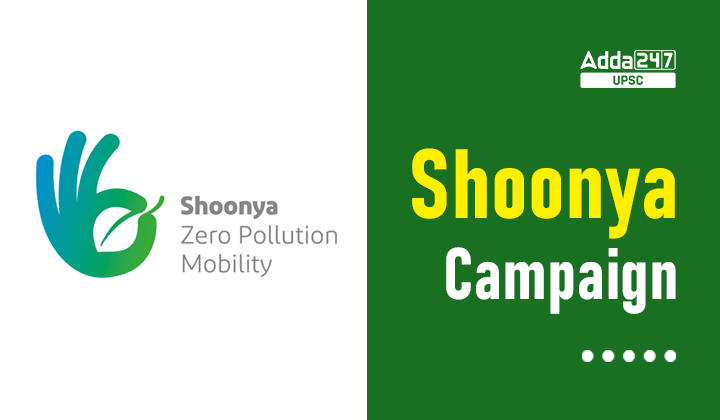Table of Contents
Shoonya Campaign- Relevance for UPSC Exam
- GS Paper 2: Governance, Administration and Challenges
- Government policies and interventions for development in various sectors and issues arising out of their design and implementation.
Shoonya Campaign in News
- Recently, NITI Aayog held a day-long forum to commemorate the one-year anniversary of Shoonya, India’s zero pollution e-mobility campaign.
- The National Programme on Advanced Chemistry Cell (ACC) Energy Storage (Part III) report was also launched during the event.
- The report highlights that India’s $2.5-billion Production-Linked Incentive (PLI) scheme for Advanced Chemistry Cell (ACC) energy storage is critical for meeting the projected cumulative battery demand of 106–260 GWh by 2030.
- This is to successfully realize the country’s vision for EV adoption and grid decarbonisation.
Need for Shoonya Campaign
- Rapid global urbanization and e-commerce sales are driving significant growth in urban freight and mobility demand. In India, these sectors are expected to grow at a CAGR of 8% through 2030.
- If this demand is met by internal combustion vehicles (ICE), it would significantly increase local air pollution, carbon emissions, and lead to adverse public health effects.
- EVs offer an opportunity to address these challenges. Compared to ICE vehicles, EVs do not emit PM or NOx emissions at the tailpipe; they release 60% less CO2 and have 75% lower operating costs.
- Shoonya supplements existing national and sub-national EV policies as well as corporate efforts in India by creating consumer awareness and demand for zero pollution rides and deliveries in Indian cities.
Shoonya Campaign
- About: Shoonya is a consumer awareness campaign to reduce air pollution by promoting the use of electric vehicles (EVs) for ride-hailing and deliveries.
- Participation: The Shoonya Campaign has 130 industry partners, including ride-hailing, delivery and EV companies.
- Performance: Till April 2022, the estimated number of electric deliveries and rides completed by corporate partners via the Shoonya campaign was close to 20 million and 15 million, respectively.
- This translates to a carbon dioxide emission savings of over 13,000 tonnes.
- Significance: If all final-mile deliveries and rides in India were shoonya, India would be well on its way to improving air quality, reducing public health costs, enhancing energy security, and achieving its climate targets.
- Potential: The electrification of the ride-hailing and delivery sector in India could mitigate close to 54 MT of CO2 emissions, 16,800 tonnes of PM emissions, and 537,000 tonnes of NOx pollution, saving roughly 5.7 lakh crore in expenditures over a year.
- Shoonya campaign can lead to dramatic emission reductions in the transport sector, supporting India’s five-point agenda (Panchamrit), announced at COP 26, to reduce carbon emissions and secure its 2070 climate goals.
Tackling Air Pollution in Delhi: CAQM Policy to Tackle Air Pollution in Delhi
Tackling Air Pollution in Delhi: CAQM Policy to Tackle Air Pollution in Delhi



 TSPSC Group 1 Question Paper 2024, Downl...
TSPSC Group 1 Question Paper 2024, Downl...
 TSPSC Group 1 Answer key 2024 Out, Downl...
TSPSC Group 1 Answer key 2024 Out, Downl...
 Cabinet Ministers of India 2024, New Cab...
Cabinet Ministers of India 2024, New Cab...







